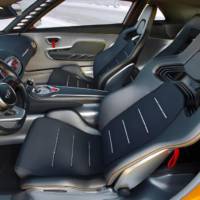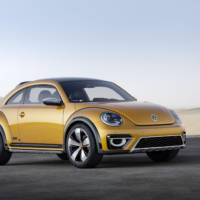No other car lives up to the standards so famously set by company founder Gottlieb Daimler quite as comprehensively as the top model from Mercedes-Benz. The S 600 with V12 biturbo engine is the top model in the already successfully established S-Class and is available exclusively with long wheelbase and with a luxurious package of equipment and appointments. Its performance data: 390 kW (530 hp) and 830 Nm of torque. The S 600 will have its world premiere at the Detroit Auto Show, with the market launch to follow in March 2014. But the S-Class is about to get even better in other ways, too: the models in the current range will be upgraded with the addition of a head-up display, touchpad and COLLISION PREVENTION ASSIST PLUS.
With an output of 390 kW (530 hp), the V12 biturbo engine in the S 600 packs a bigger punch than its predecessor did with 380 kW (517 hp). The displacement of the engine has increased from 5513 to 5980 cc. The maximum torque of 830 Nm is available from 1900 rpm. The S 600 now for the first time features the ECO start/stop function as standard, while it also meets the Euro 6 emissions standard. The combined fuel consumption of the S 600 stands at 11.1 litres/100 km – 21 percent lower than that of its predecessor (14.1 l/100 km).
The comprehensive standard specification of the S 600 reinforces its role as a flagship model. The LED Intelligent Light System, the MAGIC BODY CONTROL suspension with ROAD SURFACE SCAN and the Driving Assistance package Plus, for example, all come as standard. The latter comprises Active Lane Keeping Assist, Active Blind Spot Assist, BAS PLUS with Cross-Traffic Assist, DISTRONIC PLUS with STEER CONTROL and Stop&Go Pilot, PRE-SAFE® Brake and PRE-SAFE PLUS.
The figure "600" has long been a legend in the history of the automobile: the model 600 (W 100) launched in 1963 was the first passenger car from Mercedes-Benz to feature a V8 injection engine. This same powerful (184 kW/250 hp) and refined engine was also used from 1967 on in the W 109 model series (in the top-of-the-range 300 SEL 6.3). Further top models to feature a V8 engine included the 450 SEL 6.9 from the model series 116 (210 kW/286 hp) and the 560 SE in the 126 series (220 kW/300 hp in the ECE version).
The 600 SE model in the 140 model series of 1991 marked the introduction of the first twelve-cylinder engine as standard in a Mercedes-Benz passenger car. The M 120 delivered 300 kW (408 hp) from a displacement of 6 litres and began a tradition of V12 units as the top-of-the-range engines in the S-Class. Since the 220 series, Mercedes-Benz has also offered especially sporty, AMG-optimised variants with V8 and V12 engines at the top of its S?Class range, in the form of the S 63 AMG and S 65 AMG.
From March, all the functions of the head unit can be controlled by fingertip gesture, as with a smartphone, from the new, optional touchpad. In addition, the touchpad allows letters, numbers and special characters to be entered in handwriting – in any language that is available on the head unit. The touchpad thus offers an additional, full-function input option over and above the existing COMAND Controller and LINGUATRONIC.
A head-up display is also available as an option for the S-Class. As in a jet fighter, it displays important information directly in the driver’s field of view on the front windscreen, so ensuring that the driver’s attention is distracted less from the road ahead. The system provides information on speed, speed limits and navigation instructions, for example.
Replacing COLLISION PREVENTION ASSIST on the S-Class now is COLLISION PREVENTION ASSIST PLUS as standard. In addition to the adaptive Brake Assist system, which helps to protect against collisions at speeds of over 7 km/h, this system now features a further function: if the danger of collision persists and the driver fails to respond, the system is able to carry out autonomous braking at speeds of up to 200 km/h, thereby reducing the severity of collisions with slower or stopping vehicles. The system also brakes in response to stationary vehicles at a speed of up to 50 km/h, and is able to prevent rear-end collisions at up to 40 km/h.
A clear windscreen even at sub-zero temperatures, without all the hassle of scraping, is now possible thanks to electric windscreen heating (optional extra). This is designed to work in conjunction with the air-conditioning blower and ensures clear forward visibility in practically no time at all.



